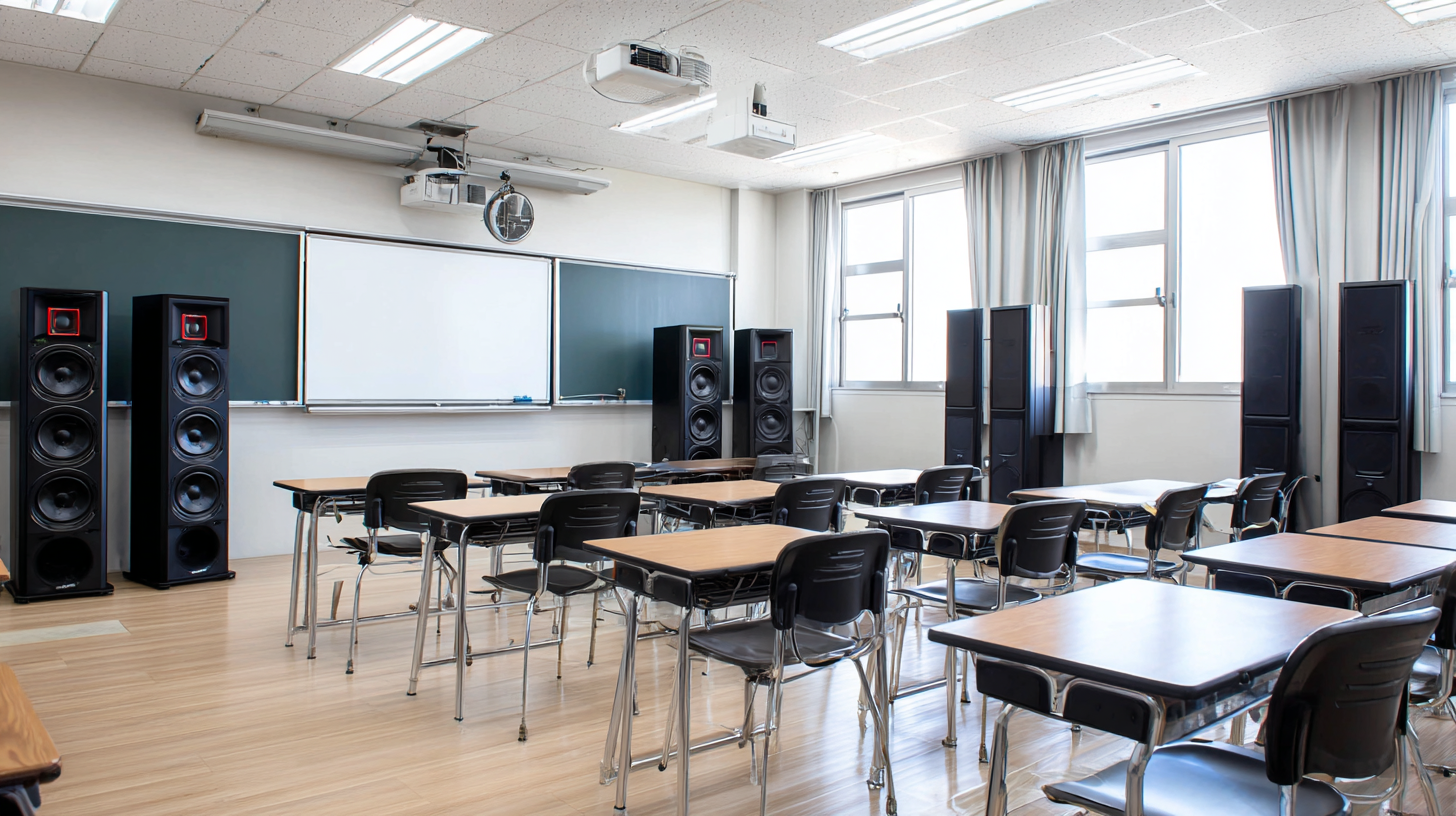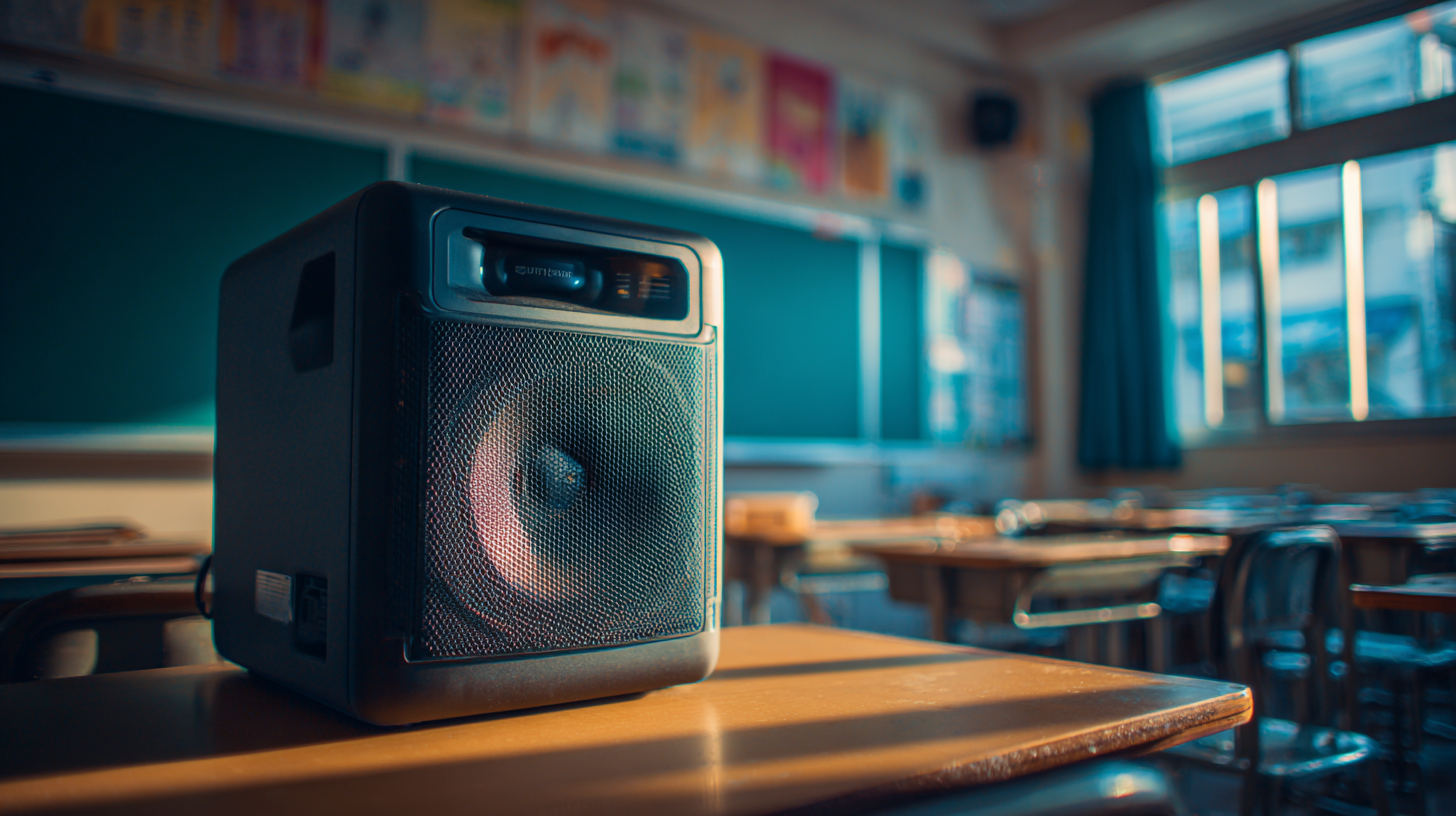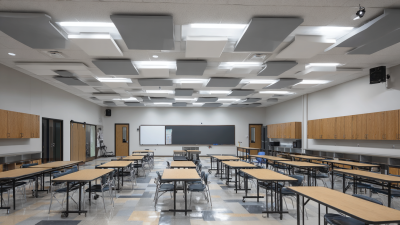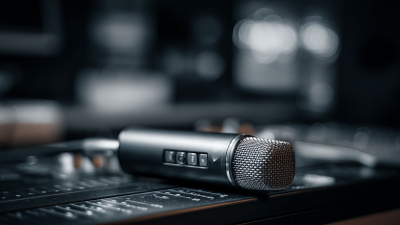Classroom amplification systems have emerged as a critical component in enhancing the learning experience, particularly in diverse educational settings. According to a report by the National Institute for Occupational Safety and Health (NIOSH), nearly 75% of classroom teachers experience voice fatigue, which can significantly impact their teaching effectiveness and student engagement. Furthermore, research indicates that students can retain up to 70% more information when auditory clarity is improved, showcasing the vital role that sound quality plays in learning environments. This guide explores the various types of classroom amplification systems, detailing their features, benefits, and best practices for implementation. By leveraging these technologies, educators can create inclusive classrooms where every student has the opportunity to hear and participate, thus promoting a more effective and enjoyable learning experience.

Classroom amplification systems play a crucial role in enhancing student engagement and retention. According to a study by the National Center for Learning Disabilities, approximately 15% of students in a typical classroom may have some degree of hearing difficulty, impacting their ability to follow lessons and participate actively. By incorporating amplification technology, such as microphones and speakers, educators can ensure that their voices are heard clearly, fostering a more inclusive learning environment. Research shows that when students can hear their teacher effectively, they are more likely to engage with the material and participate in discussions, leading to improved academic outcomes.

Furthermore, a report from the American Speech-Language-Hearing Association emphasizes that effective communication is essential for effective learning. When teachers utilize amplification systems, it not only enhances their vocal clarity but also reduces vocal strain, allowing them to deliver lessons with greater enthusiasm and energy. The result is a more dynamic classroom atmosphere that can significantly enhance student retention of information. With statistics indicating that students perform better with increased engagement—up to 34% according to the Journal of Educational Psychology—it's evident that classroom amplification systems are an important tool for modern education. Implementing these systems can be a game-changer in how effectively students absorb and retain knowledge.
When selecting an effective classroom amplification system, several key features should be prioritized to ensure an enhanced learning experience. First and foremost, sound clarity is crucial. A system that delivers clear and distortion-free audio allows all students, especially those with hearing difficulties, to engage fully with the instructional content. Look for systems with high-quality microphones and speaker components that can provide an even sound distribution throughout the classroom.
Another important feature is ease of use. A user-friendly interface enables teachers to set up and operate the system effortlessly, allowing them to focus on teaching rather than troubleshooting technology. Automated volume control can also significantly enhance usability by adjusting the sound level based on ambient noise in the classroom. Additionally, consider systems that offer wireless connectivity, giving teachers the freedom to move around without losing sound quality. Such features contribute to a dynamic and interactive learning environment, making classroom amplification systems an invaluable tool for educators.
| Feature | Description | Importance | Typical Price Range |
|---|---|---|---|
| Sound Clarity | Ensures that audio is clear and easy to understand, reducing strain on students. | Essential for effective communication. | $200 - $800 |
| Ease of Use | User-friendly controls that can be operated by teachers without technical assistance. | Important for minimizing disruption during lessons. | $150 - $600 |
| Portability | Lightweight system that can be easily moved between classrooms. | Facilitates use in multiple locations. | $100 - $500 |
| Battery Life | Long battery life to support full school days without recharging. | Critical for uninterrupted teaching. | $50 - $300 |
| Compatibility | Ability to connect with various devices including computers, tablets, and microphones. | Enhances versatility and functionality. | $100 - $400 |
Sound quality in the classroom plays a pivotal role in shaping both learning outcomes and teacher performance. When the auditory environment is clear and well-balanced, students are better able to focus and absorb information. High-quality amplification systems ensure that all students, regardless of their seating position, can hear the instruction clearly. This not only reduces the cognitive load associated with trying to decipher muffled speech but also promotes engagement, as students are more likely to participate actively when they can hear discussions and instructions without strain.

Moreover, a good sound system can enhance a teacher's effectiveness. When educators can project their voice effortlessly, they can concentrate more on delivering engaging lessons rather than worrying about how to be heard. This improved communication fosters a positive atmosphere where students feel comfortable asking questions and contributing to discussions. As a result, both student comprehension and retention of material are enhanced, leading to better academic performance overall. Quality sound not only supports the learning process but also empowers teachers, redefining the dynamics of classroom interaction.
Implementing classroom amplification systems can significantly enhance the learning experience, but to maximize their benefits, educators must adopt best practices tailored to their unique environments. According to a report by the Journal of Educational Technology, studies indicate that students demonstrate a 20-40% improvement in comprehension when teachers use amplification systems, particularly in larger classrooms. This highlights the need for effective integration strategies that ensure every student can engage with the lesson, regardless of their position in the room.
To achieve optimal results, teachers should prioritize training on the technology's use and functionality. A survey conducted by Tech & Learning found that only 60% of teachers felt adequately trained on classroom technology, which can lead to underutilization. Regular professional development sessions can empower educators to leverage these tools effectively, ensuring that all students benefit from clearer audio and vibrant instruction. Moreover, incorporating feedback mechanisms where students can voice their experiences with amplification can help in fine-tuning its implementation, fostering an inclusive and dynamic learning atmosphere.
Classroom amplification systems have become essential tools in enhancing the learning experience, particularly in environments with high student-to-teacher ratios. According to a report by the U.S. Department of Education, nearly 50% of teachers in large classrooms struggle with voice projection, leading to reduced student engagement. Implementing effective amplification systems can mitigate these issues, fostering a more inclusive atmosphere where all students can hear and participate actively.
Evaluating the cost-effectiveness and return on investment (ROI) of classroom amplification systems reveals significant advantages. A study by Infocomm International highlights that schools investing in such systems see an average improvement in student test scores by 20%. Additionally, the reduction in teacher absenteeism due to vocal strain further contributes to savings; a study from the University of Arizona found that the implementation of amplification systems can reduce teacher turnover rates by up to 15%. Ultimately, the initial investment in these systems can be recouped through enhanced academic performance and improved teacher retention, making it a wise choice for educational institutions aiming for excellence.





